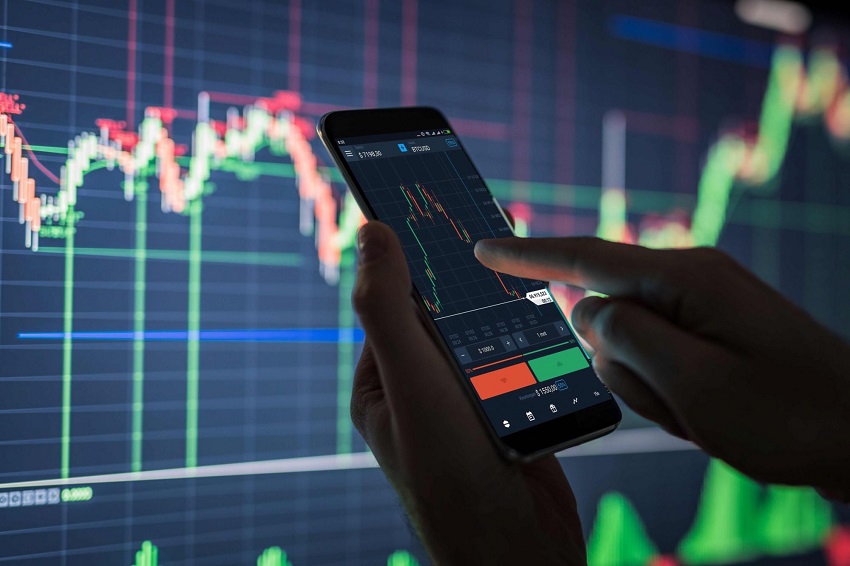Trading is a fascinating and dynamic practice that involves the buying and selling of financial instruments, such as stocks, bonds, currencies, commodities, and derivatives, with the aim of making a profit. It plays a crucial role in the global economy, allowing individuals and institutions to participate in financial markets and benefit from their fluctuations. In this article, we’ll delve into the world of trading, exploring how it works, the principles behind it, and the strategies used by traders to succeed. The blog content is crafted by Entrepbusiness.com
Understanding Trading: The Basics
At its core, trading is all about speculation. Traders carefully analyze market trends, financial news, and other factors to predict whether the price of a particular asset will rise or fall. This speculative nature forms the foundation of trading, driving individuals and institutions to take calculated risks in pursuit of profit.
The concept of supply and demand is the fundamental principle that governs trading. If you’re new to the world of investing, you may be wondering, what is online trading. Online trading simply means using a digital platform to buy and sell assets like stocks, bonds, and cryptocurrencies. When there is a higher number of buyers in the market than sellers, the demand for the asset increases, leading to a rise in its price. Conversely, when there are more sellers than buyers, demand decreases, resulting in a decline in the asset’s price.
The Mechanics of Trading
Trading transactions take place through various methods, either within a dealer network or directly on the order book of an exchange. Here are some key aspects of how trading works:
1. Market Orders
Market orders are straightforward and immediate. Traders use market orders to buy or sell assets at the current market price. These orders are executed instantly, ensuring that the trader gets the best available price at that moment.
2. Limit Orders
Traders can also place limit orders, specifying the maximum price they are willing to pay to buy an asset or the minimum price they are willing to accept to sell an asset. These orders are not executed immediately but are instead placed in the order book until the market reaches the specified price.
3. Online Trading Platforms
Modern trading is facilitated through online trading platforms provided by brokerage firms. These platforms give traders access to real-time market data, the ability to place trades, and the capability to monitor their investment portfolios easily.
4. Risk Management Strategies
Trading inherently involves risk, and successful traders employ various risk management strategies to safeguard their investments. Techniques like setting stop-loss orders, which automatically trigger the sale of an asset if its price falls below a predetermined level, or using hedging to offset potential losses, are common approaches used by traders.
Diverse Trading Strategies
Traders adopt different approaches to achieve their financial goals. Some of the common trading strategies include:
1. Day Trading
Day traders focus on short-term price fluctuations and typically close their positions by the end of the trading day. They capitalize on intraday price movements, aiming to make multiple trades throughout the day to accumulate profits.
2. Swing Trading
Swing traders, on the other hand, hold positions for a few days to weeks, taking advantage of medium-term price movements. This approach allows them to capture price swings within a broader trend.
3. Long-Term Investing
Long-term investors, as the name suggests, take a more extended view, holding positions for months to years. Their strategy centers on the overall growth potential of an asset, rather than short-term price fluctuations.
Trading Made Accessible
With the advent of technology, trading has become more accessible to individual investors. Online trading platforms, along with educational resources and market analysis tools, have empowered people from all walks of life to participate in trading activities.
In conclusion, trading is a captivating world where individuals and institutions engage in the buying and selling of financial instruments to profit from market movements. By understanding market trends, employing different order types, and implementing risk management strategies, traders navigate the complexities of financial markets. This dynamic practice continues to evolve, and its impact on the global economy remains profound.
FAQs
Q1: Is trading a guaranteed way to make money?
Trading comes with inherent risks, and there are no guarantees of profits. Success in trading requires knowledge, experience, and the ability to manage risks effectively.
Q2: Can anyone participate in trading?
Yes, with the advent of online trading platforms, virtually anyone with access to the internet can participate in trading.
Q3: What financial instruments can be traded?
Traders can engage in the buying and selling of various financial instruments, including stocks, bonds, currencies, commodities, and derivatives.
Q4: Is day trading suitable for everyone?
Day trading demands quick decision-making and can be emotionally and mentally challenging. It may not be suitable for everyone, and individuals should carefully assess their risk tolerance and time commitment before engaging in day trading.
Q5: Are there any guarantees against losses?
No, there are no guarantees against losses in trading. Risk management strategies can help minimize potential losses, but it’s crucial to understand that trading involves a degree of uncertainty.







